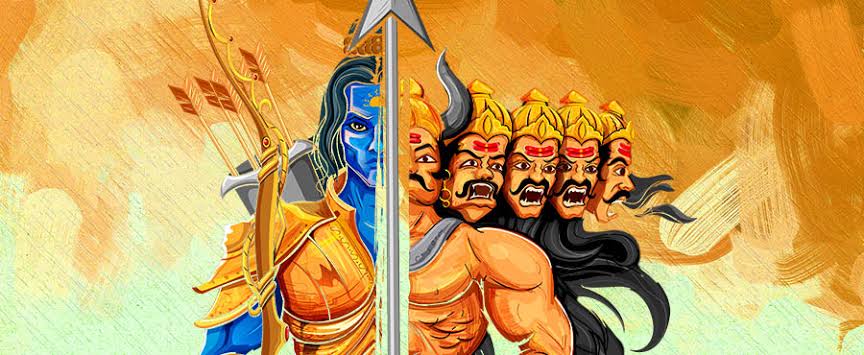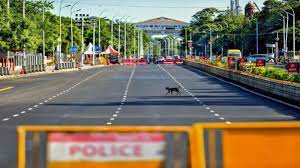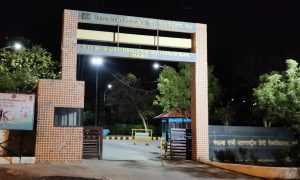On 09.11.2019 a five judge bench of the Hon’ble Supreme Court passed an unanimous order allocating the entire 2.77 acres of disputed land for the construction of Ram Mandir and thereby gave quietus to one of the longstanding disputes that plagued our country ( ref. M. Siddiq Vs. Mahant Suresh Das, 2019 SCC Online 1440). Thereafter, on 05.08.2020 the Bhumi Pujan was performed by the Hon’ble Prime Minister of India Mr. Narendra Modi at the Ram Janmabhumi. This spectacular event was a precursor to the commencement of the construction of a grand and holy Ram Mandir at Ayodhya. The buzz around the event pushed the entire nation into festive mood. It was a day of jubilation for every faithful Hindu residing in India and elsewhere in the world.
Amidst such festivities a group of people chose to attack the faith of crores of Hindus by hailing Ravana (the chief antagonist in Ramayana) by trending #TamilsPrideRavana and #LandOfRavana on twitter. A simple skim through the twitter trends, Facebook posts and Youtube videos that were posted on 5th August, 2020 hailing Ravana would show that 90% of the Hindu hate content was posted by social media users from Tamil Nadu. Another interesting facet is that majority of the tweets and posts were made by members affiliated to a secessionist fringe outfit that is well known for its abysmal performance in electoral politics. However, followers of a major opposition party, (whose members are known to spew venom against Lord Rama) also did their part in hurting Hindu sentiments and faith by adding posts distorting historic facts to hail Ravana a Tamil ancestor and denigrate Lord Rama as an Aryan outsider.
While their motive to hurt Hindu sentiments and denigrate its Holy Scriptures and deities has remained a constant, the modus operandi of these forces over time has undergone a sea of change over a period of time. From peddling fake narratives and calling Hindu scriptures as irrational fables to calling a cruel antagonist in Ramayana (Ravana) as their ancestor to spread hatred against Hindu faith and incite a fake racial divide, the design to destroy Hinduism and disturb social peace has been re-strategized. Another interesting feature is that those who had earlier dismissed Ramayana as a work of fiction have now started to cherry pick characters from it and celebrate them to bolster their divisive agenda.
In the normal course, it is best to ignore these forces. Ramayana and Lord Rama have stood the test of time. The character, glory, fame, might and dharma of Lord Rama serves as inspiration to mankind. However, one cannot turn a blind eye to distorted facts and half truths. Distorted facts and half truths are more dangerous than lies and fake narratives. It is desirable that such narratives be nipped in the bud with truth. This article aims to present some facts regarding Ravana as presented in Valmiki Ramayana and other Holy Hindu Scriptures. Firstly I present 5 important facts regarding Ravana as given in Valmiki Ramayana and other Hindu scriptures:

- BIRTH OF RAVANA
According to Bhagavata Purana, the dwarapalakas (gatekeepers) of Lord Vishnu; Jaya and Vijaya were born as Ravana and his brother Kumbhakarna in Treta Yuga because of a curse they received from the four kumaras. According to Uttara kanda of Valmiki Ramayana, Ravana was born as dashagriva (ten headed) to the great Sage Vishrava Brahma and Rakshasa princess Kaikesi. Vishrava was the son of the great Sage Pulastya and grandson of Brahma. Ravana was thus born in a Brahmin lineage and was tutored by his father in vedas and shastras. There is no concrete evidence regarding the exact place of his birth in Ramayana except for the fact that he was born in Brahmin lineage. This can be further proved by the fact that he used to perform trikala sandhyavandanam.
- EVIL BY BIRTH
Another interesting story in the Uttara Kanda of Valmiki Ramayana mentions that Rakshasa princess Kaikesi went to Vishrava to beget great children equal in prowess and qualities to Kubera (Son of Vishrava) in the Pradosha time (Evening hours). In Hindu belief, Evening hours during sunset are to be utilised for divine prayers. Since, Vishrava and Kaikesi copulated in time meant for payers, the first three children conceived ( Ravana, Kumbhakarna and Shurpanakha) were evil by nature while the one who conceived after the Pradosha time (vibheeshana) became a great dharmic from birth itself.
- HOW DID DASHAGRIVA BECOME RAVANA?
Scriptures Say that Ravana was born with the name Dashagriva as he was born with ten heads. Once when Dashagriva wanted to meet Lord Shiva, he was prevented by Nandi from meeting Lord Shiva as he was spending time with his consort Mata Parvathi. Angered by this he tried to lift the Kailash mountain (abode of shiva). When Lord Shiva pressed the mountain with his thumb, the hands of dashagriva were trapped beneath and he sang hymns in praise of Lord Shiva and screamed the Vedas in pain for a hundred years. The worlds were shattered by the screams of dashagriva. Then, Lord Shiva blessed dashagriva and addressed him as ‘Ravana’, the one with a terrible roar. Thus, Dashagriva became Ravana.
- RAVANA- THE GREAT SHIVA DEVOTEE
In Hindu Scriptures, Ravana is depicted as a great Lord Shiva devotee who was blessed by the Lord with several boons. Ravana also wrote the holy Shiva Tandava Stotra recited popularly by Shiva bhakts around the world. However, Ravana after getting several boons could not control his Ego and became more and more arrogant. This arrogance coupled with cruelty and the inherent evilness that came from birth made him a devil that the world feared.
- RAVANA- THE CONNOISSEUR OF SCRIPTURES
Ravana was a great astrologer and a scholar of his time. The ‘Ravana samhita’ authored by him still continues to be a major work in astrology. Apart from this, Ravana was also well versed in esoteric practices (black magic). In all, Ravana Mastered 6 Shastras, 4 Vedas, 64 arts and was an expert of Samaveda. It is wrong to portray him as a shaivite alone. Valmiki Ramayana itself describes Ravana’s devotion to Lord Brahma, Lord Surya among other Sanathana dharma gods. The Sanskrit works such as Arkaprakash, Kumar Tantra, Indrajaal, prakritakamadhenu, prakritalankeshwar and Rig Veda bhashiya are attributed to Ravana. Neither Valmiki Ramayana nor Kamba Ramayana mentions him as a Tamil King.
Now I present some incidents that show the evilness of Ravana as depicted in Valmiki Ramayana and other scriptures:
- The Golden Kingdom of Lanka belonged to Kubera. He was also the son of Vishrava and step brother of Ravana. Ravana had usurped this kingdom of his elder brother along with the glorious and holy pushpaka vimana.
- According to Uttara kanda of Valmiki Ramayana, Shurpanakha secretly married VidyutJihva the Danava prince belonging to the Kalkeya danava clan of the netherworld. This enraged Ravana as Danavas and Rakshasas were sworn enemies. But he later accepted the marriage at the intercession of Mandodhari. Once when Ravana visited the kingdom of Vidyutjihva, the latter attacked the former. In the ensuing battle, Vidyutjihva was killed by Ravana. This left a deep impact on the mind of Shurpanakha. Later, on witnessing the valour and might of Rama when he killed 14000 Rakshasas including Khara and dushana (brothers of Shurpanakha) at Janasthana in 1 hour 40 minutes, she pitted Ravana against Rama to avenge her husband’s death.
- Valmiki Ramayana mentions about another incident where Ravana Raped Rambha, the wife of Nalakuvara. Nalakuvara was the son of Kubera. Technically, Ravana raped his own daughter-in-law despite Rambha telling him that she was Nalakuvara’s wife and his daughter-in-law. It was after this incident that Ravana got a curse from Nalakuvara that his head will be burst into pieces if he touched any other women against her wish.
- Ravana once picked a fight with Vaali when the two were offering sandhyavandanam at southern ocean. Ravana was defeated and taken to kishkinda by Vaali. However, to avoid death Ravana struck a deal and made friendship with Vaali. According to this deal Ravana promised Vaali that he would share anything precious and beautiful that he had in his possession including his wives. Such unholy alliance had to be struck by Ravana to protect his life.
- Ravana had the habit of winning kingdoms by waging wars and filling Lanka with the wealth of the defeated kingdoms. He also overpowered and forced himself onto many yaksha, gandharva, kinnara and deva women.
- Ravana had deputed many thousands of Rakshasas and Rakshasis like Marichcha, subahu, Khara, Dushana, Tataki in the forests of India torment Tribal people and Rishis.
- Shurpanakha and Ravana were cunning manipulators. During the exile of Lord Rama, Shurpanakha was attracted by Rama’s looks when she saw him in the forest and approached him. She asked Rama to marry her. Then Rama told her about his vow of marrying only once and asked her to approach Lakshmana. Lakshmana Then told Shurpanakha that he was an obedient servant of Lord Rama and it would not be good if he married her. When she realised that both the brothers were making her roam in vain she tried to attack mother sita by calling her an ugly woman. It was then that Lakshmana attacked Shurpanakha. While narrating about the incident of her attack by Rama Lakshmana She hid the complete facts and instigated the desire in Ravana by describing the beauty of mother Sita. After the abduction of mother Sita, Ravana did not inform about it to his wives, brothers or ministers for a very long time. But, when he had to tell about it to his ministers, he made this personal wrong committed by him, an issue of the kingdom. He misinformed them that mother Sita asked Ravana 10 months time before she became his. The truth however was that Ravana had given 10 months deadline to mother Sita to surrender herself to him. These manipulations by the brother and sister duo destroyed Lanka.
- Ravana could not face Rama or Lakshmana directly in a battle. He had to enact a cruel drama with marichcha and had to disguise himself as sanyasin to abduct mother Sita.
- Valmiki Ramayana mentions two incidents when Ravana tried to convince mother Sita with false evidences that Rama was dead. Once he brought an illusory head of Rama and showed it to mother Sita. On another occasion he made rakshasi Surasa show the fallen Rama Lakshmana as dead to mother Sita from the pushpaka vimana.
- In the Yuddha kanda, Ravana was defeated twice by Lord Rama. In fact on the first occasion, Lord Rama did not kill Ravana. He instead asked a disarmed Ravana to go back and come the next day after contemplating, taking adequate rest and arming himself once again.
A reading of the Valmiki Ramayana and its adaptations in various languages along with other puranas would show why our ancestors celebrated Lord Rama and denounced Ravana as evil. In fact, even in Valmiki Ramayana it was sage/siddhar Agasthya who helped Lord Rama defeat Ravana. Sage Agasthya is revered by Tamils and is considered as the inventor of early Tamil grammar. The celebrated Poet Sage Valmiki himself is worshipped as Siddhhar Vanmikar by Tamils. He also celebrated the glory of Lord Rama. Apart from these facts, the number of Lord Rama temples around Tamil Nadu shows how Tamils had always celebrated and revered the good over bad. JAI SHRI RAM.
AUTHOR

N. Srinivas Jayaprakash, B.A, B.L (Hons.) is a young practicing Advocate who is currently working as a legal Researcher with a sitting High Court Judge on a contractual basis in the Hon’ble Madras High Court. He is an avid reader, debater and a dharmic who is committed to counter fake narratives and distortions that endanger the unity and peaceful fabric of the Indian society. Twitter id- @CustosLegis_Jay
























 WhatsApp us
WhatsApp us
Pingback: low carb diet vs keto
Pingback: gay closeted dating a girl
Pingback: are mushrooms edible
Pingback: dig this